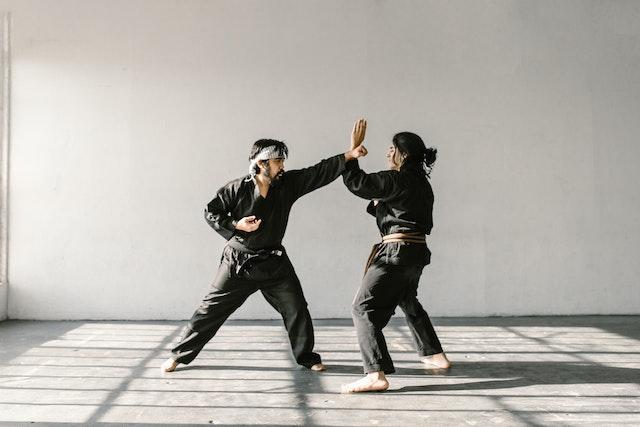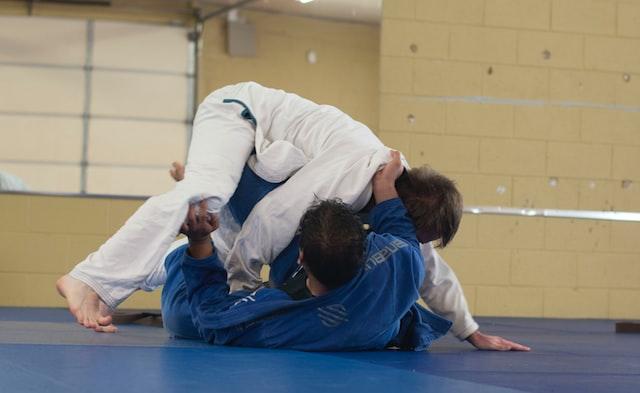
It is commonly said that Jiu-Jitsu was invented by a Japanese Samurai warrior in the 15th century. However, this is not actually true.
The origins of Jiu-Jitsu can be traced back to India more than 2,000 years ago. From there, it spread throughout Asia and eventually arrived in Japan.
In Japan, Jiu-Jitsu became popular among the Samurai as a form of hand-to-hand combat. It was also used in conjunction with weapons training.
Over time, Jiu-Jitsu techniques were refined and formalized into the martial art we know today.
Who invented Jiu-Jitsu?
Few martial arts can claim the same level of historical pedigree as Jiu-Jitsu. Its roots can be traced back to the feudal Japan of the Samurai, where it was used as a form of self-defense and combat.
Over time, it evolved and absorbed influences from other cultures, particularly China. In the late 19th century, Jiu-Jitsu became formalized under the instruction of Jigoro Kano, who founded the renowned Kodokan school.
However, it is important to acknowledge the many other individuals and cultures who have shaped Jiu-Jitsu into the martial art it is today.
From its humble beginnings in feudal Japan to its current status as a respected martial art, Jiu-Jitsu has a rich and storied history that is worth exploring.
- Read also: Who Invented Karate
- Read also: How did Islam Spread
Is Jiu-Jitsu Brazilian or Japanese?
Jiu-Jitsu is commonly associated with Japanese and Brazilian culture, as these countries have popularized and developed their own distinct styles of martial art.
However, its origins can be traced back to India more than 2,000 years ago.
As it spread throughout Asia and eventually arrived in Japan, Jiu-Jitsu was refined and formalized into the martial art we know today.
In Brazil, Jiu-Jitsu was popularized by the Gracie family, who adapted and further developed its techniques for modern competition and self-defense.
While there are differences in style between Japanese and Brazilian Jiu-Jitsu, both can trace their roots back to the same ancient origins. Ultimately, it can be said that Jiu-Jitsu is both Brazilian and Japanese in its history and development.
What’s The Difference Between Japanese Jiu-Jitsu and Brazilian Jiu-Jitsu?
While both styles trace their origins back to the same ancient roots, there are some key differences between Japanese and Brazilian Jiu-Jitsu.
Japanese Jiu-Jitsu focuses on traditional self-defense techniques and emphasizes throws and joint locks.
Brazilian Jiu-Jitsu, on the other hand, was adapted for modern competition and self-defense situations. It puts more emphasis on ground fighting and submission holds.
Both styles are effective forms of self-defense and can complement each other in a well-rounded martial arts practice. Ultimately, the choice of which style to pursue comes down to personal preference and goals.
Some practitioners may prefer the traditional techniques of Japanese Jiu-Jitsu, while others may be drawn to the more modern approach of Brazilian Jiu-Jitsu.
Whichever style a practitioner chooses, they can expect to learn valuable self-defense skills and improve their physical fitness.

Did The Gracies Invent Brazilian Jiu-Jitsu?
While the Gracie family played a crucial role in popularizing Jiu-Jitsu in Brazil and adapting its techniques for competition, they did not invent Brazilian Jiu-Jitsu.
The origins of Jiu-Jitsu can be traced back to India more than 2,000 years ago.
It eventually spread throughout Asia and arrived in Japan, where it was refined and formalized into the martial art we know today.
Brazilian Jiu-Jitsu builds on these foundations, adding its own unique elements to create a highly effective self-defense system.
While the Gracies may not have been the first to practice Jiu-Jitsu, their contribution to the art is undeniable. Thanks to their pioneering work, Brazilian Jiu-Jitsu is enjoyed by millions of people around the world today.
- Read also: Who Invented Piano
- Read also: Who Invented Music
Final words
Jiu-Jitsu is a martial art with a rich and storied history. Its origins can be traced back to India more than 2,000 years ago, and it has since evolved and absorbed influences from other cultures.
Today, Jiu-Jitsu is practiced all over the world and remains one of the most popular forms of self-defense.
While there are some key differences between Japanese and Brazilian Jiu-Jitsu styles, both remain highly effective forms of martial arts training.
The choice of which style to pursue ultimately comes down to personal preference and goals. Thanks to the hard work and dedication of many individuals, Jiu-Jitsu continues to thrive and grow as a martial art form.



